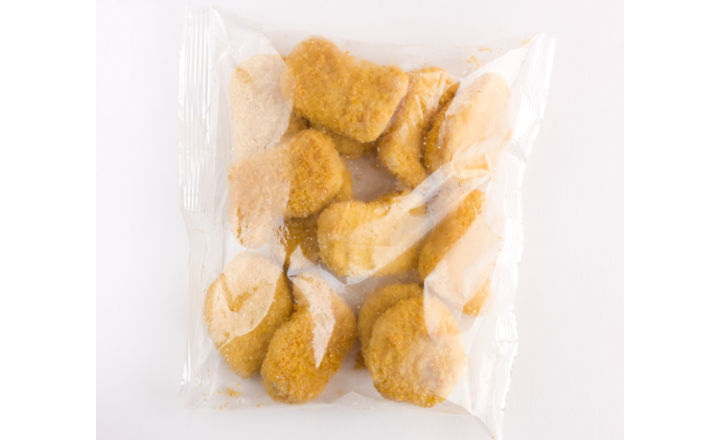Evaluate SARS-CoV-2 ...
Antimicrobial Onions...
19th March 2021 Content supplied by: Roy Betts, Campden BRI
UK Salmonella Outbreak - The Chicken Bites that Bite Back
You’ve likely heard of the UK’s large food poisoning issue associated with Salmonella enteritidis. It’s linked to certain retailer-sold breaded chicken products (including chicken bites and nuggets), caused almost 500 cases of food poisoning, and still ongoing as of March 2021.
Having begun over a year ago, it’s resulted in recalls of various non-ready-to-eat coated chicken products by a number of manufacturers and retailers in the UK. Reports suggest that the origin of the raw chicken in these products may well be Poland.
Unfortunately, this is not the first time the world has seen an outbreak like this. For many years, Canada has reported similar issues with raw coated poultry. So, what’s causing this issue? Here I’ll explore just that, as well as the ways to potentially prevent it so that history doesn’t keep repeating itself across the globe.
The size of the situation
There appear to have been well over 480 Salmonellosis cases across the UK up to now, with a potential for this to increase as the products concerned are frozen, have relatively long shelf lives, and may still lie unused in home freezers ready to be consumed.
But this is not just a UK-related issue. On 25 February 2021, the European Centre for Disease Prevention and Control (ECDC) issued a report on this matter, looking across Europe.
The report describes food poisoning cases caused by the same Salmonella enteritidis type that have been recorded in Denmark, Finland, France, Germany, Ireland, the Netherlands, Poland, and Sweden.
It states that 20% of all food poisoning cases (caused by this organism type) were hospitalized, and one death has been reported. Interestingly it also notes that 50% of the cases were in those below the age of 18 years, which is linked to the age groups most likely to consume this type of product.
The use of Whole Genome Sequencing (WGS) clearly shows that all these cases are linked to a common food source. Batches of the implicated chicken product have been traced back to meat suppliers, slaughterhouses, and /or farms in Poland, but at present, no WGS data is available to definitively link cases to this exact source.
What’s the problem?
The problem with this type of coated chicken product is that it can be produced in two ways. In the first case, the raw chicken is coated and fully cooked during the manufacturing process (i.e., the middle of the product will reach a temperature of at least 70°C for 2 minutes or equivalent) and is produced in a high-risk production environment; in the second case, the raw chicken is coated and then flash-fried. Flash-frying sticks the coating to the meat and allows it to assume a golden color; however, the meat inside remains essentially raw.
Here is where the problem lies. The two processes result in products that, to the consumer, look more or less identical, yet the products must be handled and prepared in very different ways.
For example, the fully cooked product could be warmed before eating, and the consumer would be safe as the product was cooked in the production process and produced under suitable high-risk hygienic conditions, whilst the flash-fried product must be fully cooked by the consumer before consumption.
Overcoming this issue can be a challenge as it partly depends on consumer behavior. The consumer must be relied upon to recognize the difference in these processed products, most likely by reading the cooking instructions and applying them correctly.
Of course, this assumes that the cooking instructions have been correctly developed and validated by the producer to ensure the product is fully cooked. Failure to do this will result in the consumption of raw/undercooked chicken with the associated risks of food poisoning.
What goes around comes around
Is this a new problem? Like with many issues we face, this is not new. As mentioned, Canada has seen these issues with raw coated poultry for many years. In 2019, a journal paper from the Public Health Agency of Canada reported that between 2015 and 2019, Canada had suffered 18 outbreaks and 584 confirmed cases of Salmonellosis linked to coated chicken products. There have been similar outbreaks recorded in the USA from this product type.
So, what do we do?
It is apparent that manufacturers have a great responsibility to clearly inform consumers about the nature of their products, including whether they are ready to eat (RTE) or ready to cook. They must also ensure that cooking instructions on packs are correct and properly validated to ensure that when used by the consumer, they will result in a fully cooked product.
A route taken by some manufacturers in North America is to fully cook the product during manufacture, therefore producing a product that does not contain raw chicken.
This could only be considered RTE if the manufacturing plant had been modified to handle RTE products in a dedicated high-risk area, but it does substantially reduce consumer risks.
Of course, the consumer must read cooking/preparation instructions fully, but these instructions must be clear and unambiguous. Further still, perhaps it’s time to encourage consumers to consider using a probe thermocouple when cooking; there are many available on the market, they tend to be relatively inexpensive and can be easily ‘calibrated’ at home.
How can we help?
We can help with product risk assessment and advising on optimal risk reduction strategies. Our experts have extensive experience providing advice on product labeling (including from a regulatory perspective), and we have expertise in the validation of cooking processes - either in the factory or to add on the packaging, to clearly inform consumers of the cooking required in the home.
If you have any questions, please use the 'Request Information' button provided under biography.

Tags:
Date Published: 19th March 2021
Source article link: View
Evaluate SARS-CoV-2 Air Cleaning Systems
Antimicrobial Onions – Which Pathogens


